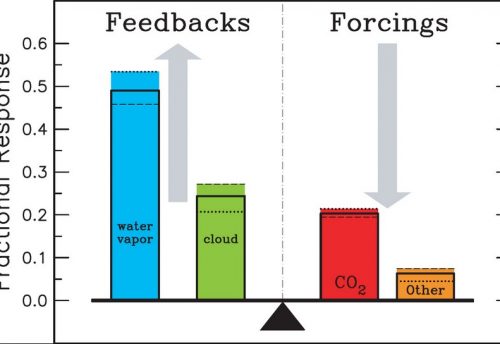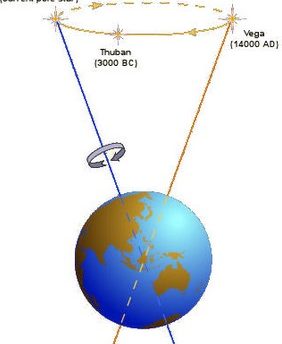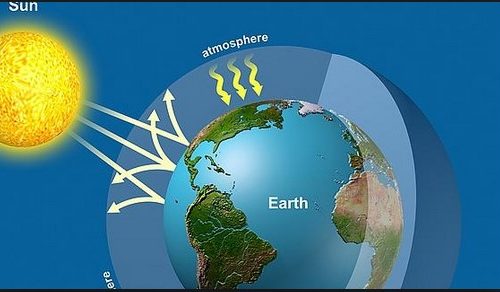
1.3.1. The Oceans
In section 1.2.5 it became clear that the atmosphere does not respond as an isolated system. Like the atmosphere, the thermodynamic state of the oceans is determined by the transfer of heat, momentum and moisture to and from the atmosphere. Ignoring for the moment the other components of the climate system, these fluxes within this coupled ocean-atmosphere system exist in equilibrium.
Momentum is transferred to the oceans by surface winds, mobilising the global surface ocean currents (Cubasch & Cess, 1990). Surface ocean currents assist in the latitudinal transfer of sensible heat in a similar fashion to the process occurring in the atmosphere. Warm water moves poleward whilst cold water returns towards the equator. Energy is also transferred via moisture. Water evaporating from the surface of the oceans stores latent heat which is subsequently released when the vapour condenses to form clouds and precipitation.
The significance of the ocean is that it stores a much greater quantity of energy than the atmosphere. This is on account of both its larger heat capacity (4.2 times that of the atmosphere) and its much greater density (1000 times that of air). The vertical structure of the ocean (Figure 1.7) can be divided into two layers which differ in the scale of their interaction with the overlying atmosphere. The lower layer comprises the cold deep water sphere, making up 80% of the oceans’ volume. The upper layer, which has closest contact with the atmosphere, is the seasonal boundary layer, a mixed water sphere extending down only 100m in the tropics but several kilometres in polar regions. The seasonal boundary layer alone stores approximately 30 times as much heat as the atmosphere (Henderson-Sellers & Robinson, 1986). Thus for a given change in heat content of the ocean-atmosphere system, the temperature change in the atmosphere will be around 30 times greater than that in the ocean. Clearly then, small changes to the energy content of the oceans could have considerable effects on global climate.
Energy exchanges also occur vertically within the oceans, between the mixed boundary layer and the deep water sphere (Figure 1.7). Sea salt remains in the water during the formation of sea ice in the polar regions, with the effect of increased salinity of the ocean. This cold, saline water is particularly dense and sinks, transporting with it a considerable quantity of energy. To maintain the equilibrium of water (mass) fluxes, a global thermohaline circulation exists, which plays an important role in the regulation of the global climate. Broecker & Denton (1990) have proposed that changes in this thermohaline circulation influence climate changes over millennia time scales (chapter 5).
circulation exists, which plays an important role in the regulation of the global climate. Broecker & Denton (1990) have proposed that changes in this thermohaline circulation influence climate changes over millennia time scales (chapter 5).




Leave a Reply